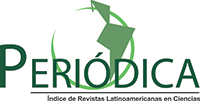Technology in nursing: trends for production and health education to the community
DOI:
https://doi.org/10.5216/ree.v12i4.12470Abstract
doi: 10.5216/ree.v12i4.12470
Because we are in the era of technology, the concepts of technology has been used, sometimes in error, it has been understood only in the perspective of a product, materiality, and also summarized the technical procedures of operation. In our view, we must broaden that conception. The technology can be understood as the result of processes implemented from everyday experience and research, to develop a set of scientific knowledge for building material products, or otherwise, for the purpose of provoking speeches on a given practical situation . This entire process should be systematically assessed and controlled(1).
The technologies can be of various types, such as Educational Technology (Device for the mediation process of teaching and learning, between teacher and student use in various processes of education - formal, academic, formal, ongoing); assistive technologies (devices for mediation of processes of care, applied by professionals with clients-users of health care systems - primary, secondary and tertiary) and Technology Management (devices for the measurement of management processes used by professionals in the services and facilities of different health systems)(1).
In this classification there is no mention of educational technologies for community education, in which we emphasize. In the context of nursing, the technologies have been produced, validated and / or evaluated. But surveys that covered the period between 1986 and 2000 found no significant numbers of jobs in the area(2-4). In these studies there is already an emphasis on the educational technology (ET), focused on new strategies for teaching and learning, with emphasis on community education, groups or specific types of customers(2).
In a recent study that covered a longer time period between 1980 and 2009 with emphasis on productions indexed BDENF, LILACS and CEPEn catalogs, we see three trends in production: Technologies for Higher and Technical Education Student, Technologies for Health Education, Community and Continuing Education with Technology for Professionals(5).
We are interested in the educational technologies for health education with the community (community education), and in this area for some types of TE which stand out: the tactile and auditory TE, the TE and expository dialogue, the TE printed and audio-TE visual. In our research group we have prioritized in a first moment, the TST has been produced printed and validated by nursing students in different investigative methods, such as undergraduate research projects and final papers for undergraduates.
It is noteworthy that the technologies produced as printed brochures, posters, brochures, manuals, booklets or handouts for guidance, not always (or almost never) go through a validation process. The problem is that many nurses do not know how to perform this procedure, delivering materials not directly tested and validated for the population. As we know little about such validation practices, we can not promote such initiatives because they do not know these assumptions(6).
Among the challenges for health education to the community when it comes to production and validation of ET, regardless of modality, are to promote studies that give voice to community, to identify what information they have available and interested in what the TE easier to access and use among different groups (children, adolescents, adults and seniors).
Another challenge, also very important is the development of research methodologies to validate such TE, which will be submitted to the contents (judges-experts) and form (target audience), to a participatory and inclusive.
Finally, regarding the training of nurses for validation and production of ET, we have to integrate these aspects to the current discussions on health education to the community, to engage them in such processes. The action-research must generate new TE that after registration of authorship, will represent the materiality of ideas and knowledge transfer to the community.
REFERÊNCIAS
1. Nietsche E. Tecnologias educacionais, assistenciais e gerenciais: uma reflexão a partir da concepção dos docentes de enfermagem. Rev Lat Am Enfermagem. 2005;13(3):344-53.
2. Mendes IAC, Leite JL, Trevizan MA, Trezza MCSF, Santos RM. A produção tecnológica e a interface com a enfermagem. Rev Bras Enferm. 2002;55(5):556-60.
3. Teixeira E. Tecnologias educacionais na enfermagem: evidências na literatura 1980-2009. In: Anais da X Conferência Ibero americana, II Encuentro Latinoamérica-Europa, III Simposio de Investigación de Educación em Enfermería; 2009 oct 26-30; Panamá, Panamá. p. 41-9.
4. Gutierrez MG, Leite JL, Erdmann AL. Os múltiplos problemas pesquisados e a pesquisa em enfermagem. In: Anais do 11 Seminário Nacional de Pesquisa em Enfermagem; 2001 maio 27-30; Belém, Brasil. p. 21-8.
5. Nietsche EA, Leopardi MT. O saber da enfermagem como tecnologia: a produção de enfermeiros brasileiros. Texto Contexto Enferm. 2000;9(1):129-52.
6. Oliveira MS, Fernandes AFC, Sawada NO. Manual educativo para o autocuidado da munlher mastectomizada: um estudo de validação. Texto Contexto Enferm. 2008;17(1):115-23.














